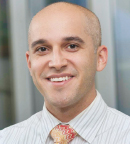
Jack E. Burkhalter, PhD

Nelson Sanchez, MD
In 2011, the Institute of Medicine (IOM) published its landmark report “The Health of Lesbian, Gay, Bisexual, and Transgender People: Building a Foundation for Better Understanding,” which recognized the scarcity of research in lesbian, gay, bisexual, and transgender (LGBT) individuals and the need to address health disparities in this population.1 The report called for researchers to engage LGBT people in health studies and for the collection of demographic information on patients’ sexual orientation and gender identity in federally funded surveys—just as they routinely do on race and ethnicity—as well as in electronic health records, to better understand the health conditions that affect them.
Despite the IOM report’s recommendations (which so far haven’t been implemented) and the growing social acceptance of LGBT people (including the Supreme Court’s ruling in 2015 guaranteeing the right of same-sex couples to marry), barriers remain in the understanding of the health needs of this population, especially in the areas of cancer prevention, treatment, and survivorship.
According to a paper published earlier this year by Jack E. Burkhalter, PhD, Nelson Sanchez, MD, and colleagues, although none of the large national cancer registries and surveys of cancer incidence collect data about sexual orientation and comprehensive gender identity, there is evidence showing that some LGBT people likely have an elevated risk for cancer due to a variety of factors, including a higher prevalence of smoking, obesity, alcohol abuse, and human immunodeficiency virus infection.2 And while the exact cancer incidence and survivorship numbers in this population are not known, the National LGBT Cancer Network estimates that the number of cancer survivors in the United States is over 1 million.3
LGBT cancer survivors also experience greater stigma and discrimination within the health-care system, from having to confront an assumption of heterosexuality and cisgender identity to discrimination and harassment from the point of cancer screening to treatment and care at the end of life, according to Dr. Burkhalter and Dr. Sanchez.
The ASCO Post talked with Dr. Burkhalter, Assistant Attending Psychologist at Memorial Sloan Kettering Cancer Center, and Dr. Sanchez, Assistant Professor of Medicine at Memorial Sloan Kettering Cancer Center and Chair of the LGBT Steering Committee at Weill Cornell Medicine in New York, about health-care disparities in the LGBT cancer patient population and how to address and overcome these health-care inequities.
Risks and Barriers
What is currently known about cancer risks in LGBT individuals, and how do they differ from those in the general population? What are some of the barriers to their receiving health care?
Dr. Sanchez: Overall, the research on cancer risk in the LGBT community is poor because most of the data we have are based on convenience sampling—for example, samples taken from phone surveys or surveys taken at community events, to assess prevalence and risk for diseases like cancer or sexually transmitted infections.
Based on limited research, we know that LGBT patients with cancer are at greater risk for delayed care because they avoid seeking health care, as a result of real or perceived discrimination.— Nelson Sanchez, MD
Tweet this quote
When we look at a population sample like gender or race/ethnicity to evaluate health issues, demographic data can be pulled from electronic medical records, which is an ideal way to gather information on health disparities. We haven’t been able to do that with LGBT patients because most medical records don’t collect information on sexual orientation or gender identity. I think that will change over the coming decade because federally funded national health surveys will now include sexual orientation and gender identity in data collection.
Based on limited research, we know that LGBT patients with cancer are at greater risk for delayed care because they avoid seeking health care, as a result of real or perceived discrimination. Data have also shown that LGBT individuals present with the disease at a more advanced stage.
In terms of cancer risk factors, the prevalence of anal cancer is higher in gay men than in heterosexual men, primarily because people are more likely to get cancer if they are in an immunocompromised state, and a substantial number of gay men are human immunodeficiency virus–positive. With regard to cancer risk factors in women, some studies suggest that lesbian women are at increased risk for breast cancer because they are more likely to be obese, use tobacco, and drink alcohol and are less likely to get pregnant and use oral contraceptives compared to their heterosexual peers. Lesbian women may also be at greater risk for ovarian and endometrial cancers for the same reasons, but, again, we do not have conclusive data.
In terms of health-care barriers, as noted, LGBT people often avoid care due to either real or perceived discrimination they have experienced in accessing care. Thus, they may avoid going to a clinic or hospital for cancer screenings or treatment because they fear that a provider, staff member at the front desk, or other health professional will be discriminatory or unknowledgeable about the different health concerns of LGBT patients.
Overcoming Obstacles
How can these health-care barriers be overcome?
Dr. Sanchez: We have to do a better job of training our health-care professionals, including nurses, clinicians, and ancillary staff, in culturally competent care for LGBT patients. To accomplish that goal, we need to have the support of senior leaders at health professional schools. A survey of medical schools in the United States and Canada shows that the median time spent covering LGBT issues was 5 hours, and nearly 7% of medical schools have no LGBT coverage at all.4
That has to change.
Beyond training at health professional schools, hospitals need to—at the very least—provide sensitivity training for all staff to be aware of LGBT identities and how to create a safe space for these patients, their partners, and family members.
Dr. Burkhalter: I’ll echo what Dr. Sanchez said about the need for cultural competency training among hospital staff from administrators to clinicians and nurses and those who escort patients to treatment locations. We all need to have a greater awareness that the patient in front of us may not be heterosexual, and we have to create a welcoming environment for patients who are not heterosexual by maintaining openness to diversity. We can do that, for example, by asking at first encounter whether the patient has a partner or spouse and his or her name. If the person is transgender, we should ask what pronoun he or she prefers and how the patient wants to be addressed.
We all need to have a greater awareness that the patient in front of us may not be heterosexual, and we have to create a welcoming environment for patients who are not heterosexual by maintaining openness to diversity.— Jack E. Burkhalter, PhD
Tweet this quote
The hospital can also help create a welcoming environment by having LGBT magazines and other materials in its waiting rooms, including posters acknowledging Gay Pride Month in June, the inclusion of the terms “sexual orientation” and “gender identity” in its patient nondiscrimination policy (as described in the Patient’s Bill of Rights), and other ways to send a clear signal that the hospital takes inclusivity and diversity among its patients seriously.
Psychosocial Issues
What are some of the psychosocial concerns of LGBT patients, and how do they differ from the concerns of patients in the general population?
Dr. Burkhalter: Being lesbian, gay, bisexual, or transgender is still a stigmatized status within families, cultures, and organizations. And while marriage equality is certainly a huge step forward to reducing stigma, there is still no national antidiscrimination law protecting LGBT persons.
Entering into a cancer treatment setting for any LGBT patient is fraught with the coming out issue again and again because the information isn’t included in the medical health record. Patients have to disclose their status to each medical professional they come in contact with and hope that the person doesn’t hold it against them or mistreat them in some way.
Fear of Discrimination
Is fear of discrimination one reason LGBT patients often delay seeking
treatment?
Dr. Burkhalter: Yes, it can be a barrier, and if an LGBT person has had a particularly difficult or traumatic experience because of his or her sexual identity, whether in regard to coming out or outright discrimination or violence, it takes quite a bit of courage to enter into a health-care system that may be fraught with danger because of the patient’s LGBT status.
Here is an example of one of the difficulties LGBT patients encounter in the health-care system and how medical professionals can be proactive in helping them overcome these challenges and get the health-care services they need. I had a gay patient who was a Hodgkin lymphoma survivor. He was experiencing sexual dysfunction and asked if I could refer him to a sexual health specialist. He was concerned because he had had some uncomfortable experiences with providers who assumed he was heterosexual, and he wanted to make sure that the professional he saw for his erectile dysfunction would be knowledgeable about gay sex and not have any prejudice against him.
Before I made my referral, I talked with the sexual health physicians at my institution and got assurances that they were comfortable taking his case and had expertise in treating LGBT cancer survivors.
Unique Needs
Please talk about some of the unique needs of LGBT patients in the end-of-life care setting.
Dr. Sanchez: From my experience with LGBT patients in an urgent clinical situation and in the end-of-life care setting, we need to create an inclusive environment for partners, family members, and friends so that everyone feels welcomed and included in planning care. Advance directives, designated power of attorney for health-care decision-making, and other legal issues need to be considered. Oncologists and other health-care providers should receive enhanced education about resources addressing hospice needs and end-of-life planning for LGBT patients.
Finally, we have to ensure that LGBT patients and their loved ones receive the grief and bereavement services they require.
Dr. Burkhalter: Yes, I agree. The provision of high-quality end-of-life care is critically important at this point, as is addressing the need for bereavement or social support services at this stage of cancer care and making sure that these services are welcoming to LGBT persons, partners, and family members.
Many of the issues that crop up for LGBT patients across the cancer care continuum, such as coming out, come into play here, too, but managing any type of stigma or discrimination is much more difficult to cope with when you are this sick and vulnerable. So we have to make an extra effort to ensure that their end-of-life care needs are met with compassion. ■
Disclosure: Drs. Burkhalter and Sanchez reported no potential conflicts of interest.
References
1. The Institute of Medicine: The Health of Lesbian, Gay, Bisexual, and Transgender People: Building a Foundation for Better Understanding. Released March 31, 2011. Available at www.nationalacademies.org/hmd/Reports/2011/The-Health-of-Lesbian-Gay-Bisexual-and-Transgender-People.aspx. Accessed August 18, 2016.
3. National LGBT Cancer Network: The LGBT community’s disproportionate cancer burden. Available at www.cancer-network.org/cancer_information/cancer_and_the_lgbt_community/the_lgbt_communitys_disproportionate_cancer_burden.php. Accessed August 18, 2016.

